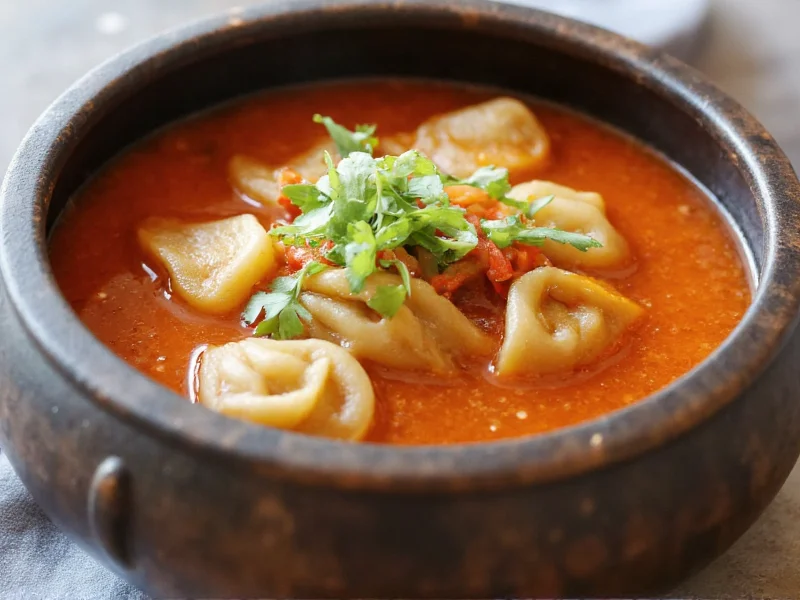When searching for information about DD soup dumplings, you're likely seeking authentic details about this culinary specialty that has captivated food enthusiasts worldwide. The "DD" designation specifically identifies the Din Tai Fung interpretation of traditional Shanghai-style xiao long bao, which has become a benchmark for soup dumpling excellence through meticulous preparation standards and quality control.
The Origin Story of Din Tai Fung Soup Dumplings
What began as a humble cooking oil retail shop in Taipei in 1958 transformed into a global culinary phenomenon when the owners pivoted to restaurant service in 1972. The DD soup dumpling recipe emerged from this transition, refined through decades of perfecting the delicate balance between wrapper thickness, filling composition, and broth consistency. Unlike traditional family recipes that vary between households, Din Tai Fung established standardized procedures ensuring identical quality whether you're enjoying these soup dumplings in Los Angeles, Tokyo, or Dubai.
Technical Characteristics That Define Authentic DD Soup Dumplings
The engineering behind exceptional DD soup dumplings involves precise specifications that separate them from ordinary xiao long bao:
| Characteristic | DD Soup Dumpling Standard | Traditional Variation |
|---|---|---|
| Wrapper thickness | 0.8-1.0mm uniform thickness | 1.2-2.0mm, often uneven |
| Fold count | Exactly 18 precise pleats | 12-16 irregular folds |
| Broth content | 21-23g gelatinized broth cube | Variable amounts |
| Diameter | 4.2-4.5cm | 3.5-5.0cm |
| Weight | 19-21g per dumpling | 15-25g |
The Science Behind the Signature Broth
What makes DD soup dumplings truly remarkable is their liquid center that transforms during steaming. Chefs create this effect through a sophisticated process where pork aspic (gelatinized broth) is incorporated into the filling. When heated, the aspic melts into the signature hot, flavorful soup. The precise ratio of collagen-rich pork skin to broth creates the perfect melt point at 65°C (149°F), ensuring the soup remains contained until consumption. This technical achievement represents why understanding how DD soup dumplings maintain broth integrity fascinates culinary scientists and home cooks alike.
Where to Experience Authentic DD Soup Dumplings
While numerous restaurants claim to serve "Din Tai Fung style" soup dumplings, only official Din Tai Fung locations maintain the exacting standards that define genuine DD soup dumplings. The brand's rigorous training program requires kitchen staff to master wrapper rolling techniques through thousands of practice dumplings before handling customer orders. When searching for locations serving authentic DD soup dumpling experiences, look for these indicators:
- Visible kitchen where dumplings are made to order
- Consistent 18-fold pleating pattern on every dumpling
- Menu specifying "Din Tai Fung" as the originator
- Specialized bamboo steamers with precise timing
Common Misconceptions About DD Soup Dumplings
Several myths persist about these celebrated dumplings. Many believe the "DD" designation refers to a specific recipe variation rather than the restaurant brand. Others mistakenly think the soup interior comes from added liquid rather than the carefully engineered aspic technique. Understanding what distinguishes genuine DD soup dumplings from imitations requires recognizing that consistency, precision, and quality control define this culinary specialty more than any single ingredient.
Cultural Significance and Proper Consumption Technique
Enjoying DD soup dumplings properly involves specific etiquette that enhances the experience. The recommended method involves:
- Transferring the dumpling to a spoon
- Creating a small opening in the wrapper
- Sipping the hot broth first
- Adding ginger and vinegar to taste
- Consuming the remaining dumpling
Home Preparation Challenges and Alternatives
Recreating authentic DD soup dumplings at home presents significant challenges due to the specialized techniques and precise ingredient ratios required. While many attempt homemade DD soup dumpling recipes, achieving the signature thin yet durable wrapper and consistent broth content proves difficult without professional equipment. Serious home cooks should focus on mastering the aspic preparation and wrapper rolling techniques separately before attempting the complete dumpling. For those seeking accessible alternatives to authentic DD soup dumplings, look for restaurants emphasizing hand-folded preparation and broth-filled centers rather than marketing specific brand associations.
Frequently Asked Questions
What does DD stand for in DD soup dumpling?
DD refers to Din Tai Fung, the Taiwanese restaurant chain that popularized this specific style of soup dumpling. The abbreviation comes from the restaurant's Chinese name pronunciation rather than an official acronym.
How do authentic DD soup dumplings differ from regular xiao long bao?
Authentic DD soup dumplings feature precisely 18 pleats, uniform 0.8-1.0mm wrapper thickness, and a standardized 21-23g broth cube that melts at exactly 65°C. Regular xiao long bao often show variation in pleating, wrapper thickness, and broth content between different restaurants or home preparations.
Can you freeze and reheat DD soup dumplings successfully?
While possible, freezing affects the delicate wrapper texture and broth consistency. Authentic Din Tai Fung locations don't recommend freezing their prepared dumplings. For best results, consume immediately after steaming. Home attempts at freezing typically result in compromised structural integrity and uneven broth distribution.
Why are DD soup dumplings more expensive than other soup dumplings?
The higher cost reflects the labor-intensive preparation requiring specialized training, precise ingredient measurements, and quality control standards. Each dumpling undergoes multiple quality checks, and staff must complete extensive training before preparing them for customers, contributing to the premium pricing compared to standard soup dumpling preparations.











 浙公网安备
33010002000092号
浙公网安备
33010002000092号 浙B2-20120091-4
浙B2-20120091-4